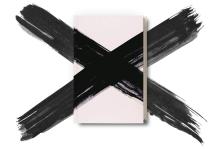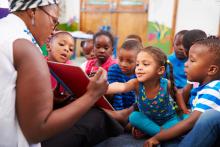book list

SUMMER SIGNALS FREEDOM. If you are anything like me, two words in particular shimmer with the season’s promise of boundlessness: Summer reading.
At the beginning of Black History Month back in February, however, I decided to restrict my reading for this year. Some friends and I embarked on what I christened a “Year of Reading X”—a year of reading only, or mostly, books by black, Latinx, Asian, Indigenous, and other authors of color.
While recent discussions around the whiteness of the publishing industry and Western canon have motivated many to make racially aware reading commitments, exclusively reading black authors or authors of color is not novel. People of color have long been aware of the whiteness of the conventional literary world and have negotiated it accordingly, finding and creating our own spaces. What sparks my year of reading, then?

TO UNDERSTAND THE TRUMP PHENOMENON, which is at least in large part about race, I decided to read. Instead of reading more white people wrestling with what has gone wrong with white people, I, a white man, focused on African-American sources, mainly novels.
This move was first suggested to me by womanist ethicist Katie Cannon, who read the novelist Zora Neale Hurston as a primary source. I, too, began with Hurston, and then couldn’t stop. For two years, I have been reading classic novels by African-American authors, seeking an answer to these questions: How do black characters experience white people? How do they describe white Christian people’s morality and religion? The answers are clear—and devastating.

This Lent, I urge you to:
- Create a book club.
- Gather with a few friends over coffee and talk through ideas of decolonization.
- Challenge yourself at home and in the workplace to fight toxic stereotypes.
- Re-educate yourself about the history of the United States and the church’s role in empire.
- Grieve, and don’t be afraid of what the wilderness might show you.
Books are always a great place to begin the journey.

TO FIND BOOKS for young people by and about people from a variety of perspectives—including race, sexual orientation, gender, religion, class, and disability—the children’s librarian at your school or the public library will often be the place to start (read why we need diverse children's literature in our December issue article, "Stories for All God's Children"). If you’re fortunate enough to have an independent bookstore in your area with a robust children’s department, the staff there may also be of help.
If in-person advice is in short supply where you live, several online sites can also provide ideas. These include the website of the Cooperative Children’s Book Center at the University of Wisconsin-Madison (ccbc.education.wisc.edu/books), which has bibliographies and booklists on a wide range of topics and population groups. The We Need Diverse Books campaign website (weneeddiversebooks.org) has a variety of resources for finding diverse books for young people, including a list of other websites that focus on books featuring certain demographics or on diversity in specific genres. ThePirateTree.com features interviews, reviews, and other articles from a collective of children’s and young adult book writers interested in children’s literature and social justice issues. School Library Journal (slj.com) is a key source of reviews and other publishing information for librarians and teachers who work with children and teens.
The following are examples of recent books that break free of the restraints of a “single story.”
Families, by Shelley Rotner and Sheila M. Kelly, is a picture book for very young children that describes and celebrates all different configurations of families. Holiday House (Ages 2 to 6)
Thunder Boy Jr. is the first picture book by beloved young-adult fiction author Sherman Alexie. Illustrated by Mexican- American artist Yuyi Morales, it is the exuberant story of a little boy who is nicknamed after his father but wishes instead for a name “that celebrates something cool that I’ve done.” Little, Brown Books for Young Readers (Ages 4 to7)

We love the latest Facebook “book challenge" going around. It reads something like this:
"List 10 books that have stayed with you in some way. Don't over-think this — they don't have to be the 'right' books or great works of literature. Just books that have impacted you in some way."
We at Sojourners are a book-loving bunch, from religion and spirituality to politics; social justice to science; cultural history to historical fiction. Below are 10 favorite or most formative books from several staff here at Sojourners (in addition to books of the Bible, which could take several spots themselves).
See any of your favorites here? Which books do you most love? Share in the comments!